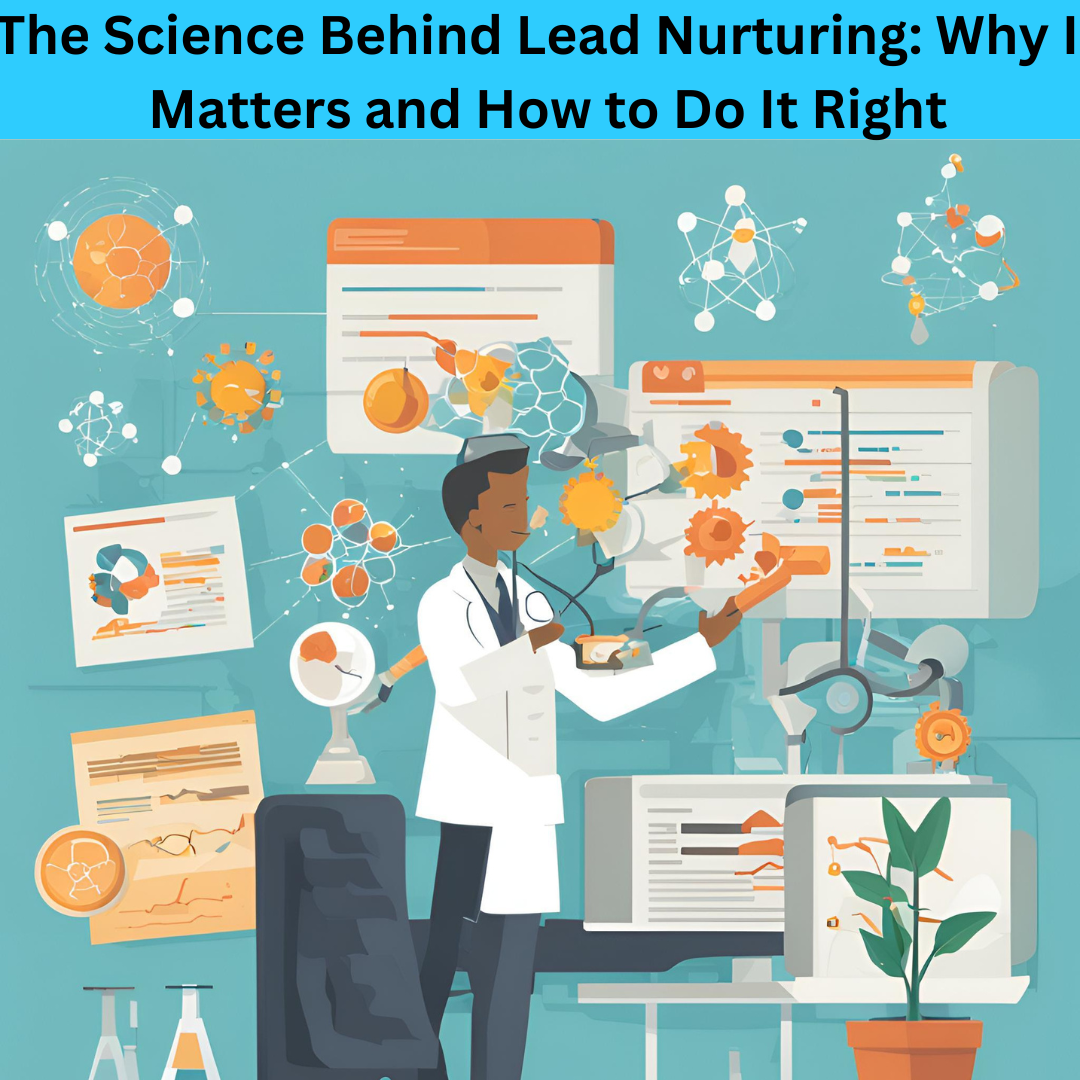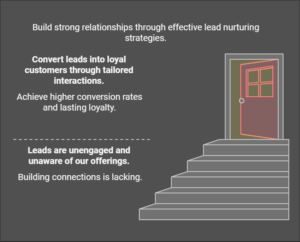
Lead nurturing is an important process in modern marketing, where relationships are built with the potential customer at every stage of their journey. It’s more than just reaching out to leads; it’s about understanding their needs, preferences, and behaviors to provide relevant, timely, and value-driven interactions. At its core, lead nurturing combines psychology, data analytics, and marketing strategies to guide leads from awareness to conversion. Business owners who spend their time developing their leads end up having stronger relationships, higher conversion rates, and long-term customer loyalty.
The science behind lead nurturing can help marketers better predict and influence lead behavior, making it a very important part of any sales funnel. This article will cover the significance of lead nurturing, its psychological underpinnings, and actionable strategies for its implementation. Whether you’re new to lead nurturing or looking to refine your approach, understanding its science and practical application can transform your marketing efforts and drive sustainable business growth.
What is Lead Nurturing?
Lead nurturing refers to the process of developing and strengthening relationships with potential customers throughout their buying journey. Unlike direct sales efforts, lead nurturing focuses on providing value, answering questions, and addressing pain points through meaningful interactions. It helps in making sure leads don’t get bored and lose interest and stay connected with your brand until they are ready to buy. It generally includes customized communication across all the channels of emails, social media, and customized content.
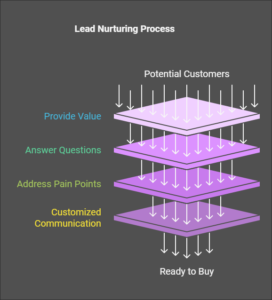
Building trust, educating the lead, and taking it to the buying decision are key objectives. Lead nurturing is not a one-size-fits-all approach; it’s highly customized and often segmented based on a lead’s behavior, demographics, or stage in the sales funnel. Concentrating on these aspects is what can create an experience that feels relevant and impactful to businesses. This will not only enhance conversion rates but also enable the building of stronger customer relationships that last longer than the mere sale.
Lead Nurturing Psychology
The success of lead nurturing lies in the knowledge of psychological principles behind buying behavior. Humans decide more on emotions, trust, and perceived value that the brand offers. Touch points are the moments of an interaction with a brand, and they have a massive role in building those perceptions. Repeated positive touch points create familiarity and trust, and leads would be more likely to participate.
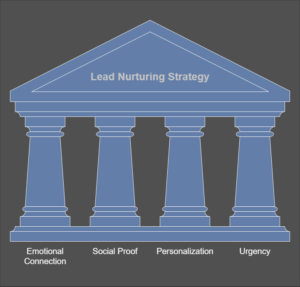
Social proof, for example, is the use of testimonials or user reviews to strengthen trust and demonstrate the value others have found in your product or service. Personalization also speaks to the need for people to feel seen and understood, so personalized messages are more impactful. The fear of missing out is another psychological principle that can be used to get people to make decisions faster by using time-sensitive offers or exclusive content. With the above psychological factors, you can align your nurturing strategy to create stronger connections, reduce resistance, and guide leads more effectively in their journey toward becoming loyal customers.
Why Lead Nurturing Matters
Lead nurturing is critical because it bridges the gap between generating leads and converting them into customers. Studies show that nurtured leads make purchases that are 47% larger than those of non-nurtured leads. It keeps leads engaged and prevents them from falling through the cracks. Companies that focus on nurturing see higher conversion rates, better ROI, and increased customer loyalty. One key reason lead nurturing matters is that it keeps brands top-of-mind for potential customers. ‘

In today’s competitive landscape, where leads are bombarded with options, staying relevant and offering consistent value is the key. The other way in which nurturing is different from selling is that leads experience a two-way relationship that makes them feel appreciated and understood. It’s no longer just about selling, but rather solving problems and satisfying needs, which gives the lead the sense that he or she can trust your brand. Hence, businesses can utilize leads most effectively and create a firm foundation for long-term success.
Components of an Effective Lead Nurturing Strategy
An effective lead nurturing strategy should have several key components to drive a lead through a sales funnel. The most crucial stage is segmentation because leads can be grouped on the basis of behavior, preference, or the level they may be at in a buying cycle. This ensures that messages are relevant and tailored toward the individual’s needs. Personalization is another essential part; leads are more likely to connect with content that talks directly to their challenges or interests. Follow-ups are to be maintained consistently in order to keep the engagement levels high and remind the lead of the value of your brand.
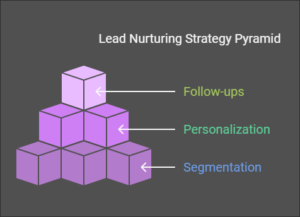
Timing is also an important factor here; reaching leads too frequently may annoy them, whereas waiting too long may leave leads uninterested. Quality content, such as a blog about education, a case study, or even a product demonstration, helps cultivate trust and address pain points. Finally, using technology such as CRM tools and marketing automation ensures efficiency and scalability. Together, these pieces create a cohesive strategy that fosters strong relationships and drives conversions.
Channels for Lead Nurturing
Lead nurturing requires leveraging multiple channels to reach and engage potential customers. Email marketing is still one of the most powerful tools for businesses; it enables sending personalized messages, nurturing sequences, and targeted offers. Social media platforms are also very key, offering the ability to engage leads through posts, ads, and direct messaging. Content marketing through blogs, whitepapers, and webinars educates and informs leads and helps place your brand as a trusted authority.

Retargeting ads on Google and Facebook let you re-engage the leads who have interacted with your website or content. Personalized landing pages can further enhance lead engagement by offering tailored experiences. Besides, phone calls or direct outreach can be effective for high-value leads requiring a personal touch. By integrating these channels together into an overall strategy, businesses will create multiple points of engagement that keep a lead thinking about the solution and drive them closer toward conversion.
Lead Nurturing and Technology
Technology is a cornerstone in any modern lead nurturing campaign because of its effectiveness in streamlining processes and enhancing personalization; it will also provide businesses with access to valuable insight. Many CRM tools from Salesforce or HubSpot enable businesses to track interactions; segment their leads; and manage communication accordingly. It also automates marketing activities that include sending the right message at the right time, hence cutting down manual effort.
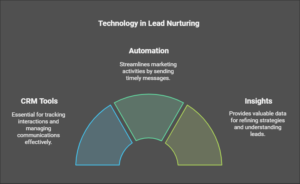
Analytics tools are also used for the same purpose as data about lead behavior, campaign performance, and engagement metrics help marketers in refining their strategy. Further lead nurturing through artificial intelligence will help predict lead behavior, suggest the best touchpoints, and personalize content at scale. Technology also ensures scalability, allowing companies to nurture thousands of leads at once without sacrificing the quality. By using those tools, companies can get timely, relevant, and impactful interactions that drive the leads toward conversion.
Measuring the Success of Lead Nurturing Efforts
Measuring the success of lead nurturing is important to determine what works and what can be improved. Key metrics include email open rates, click-through rates, and conversion rates, which provide insights into engagement levels. Lead scoring—assigning points based on lead behavior—helps determine readiness to purchase. The length of the sales cycle is another indicator; effective nurturing should shorten the time it takes for a lead to convert.

Customer feedback and surveys can offer qualitative insights into the effectiveness of your strategy. Using analytics tools, marketers can track the performance of individual campaigns, monitor ROI, and optimize their efforts. Regularly reviewing these metrics ensures that the nurturing process remains aligned with business goals and continues to deliver value.
Best Practices for Lead Nurturing
To maximize the effectiveness of lead nurturing, it’s essential to follow best practices. Begin by delivering consistent value at every touchpoint—whether it is educational content, helpful advice, or exclusive offers. Personalization matters; leads will engage with messages that cater to their needs. Ensuring marketing and sales teams are aligned means leads are well-cared for as they navigate through the funnel.
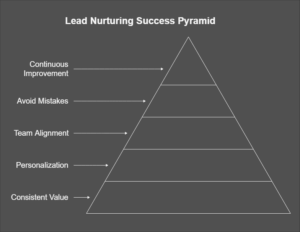
Avoid mistakes like over-communicating, which can be overwhelming to leads, or neglecting follow-ups, which can mean missing opportunities. Continuous improvement occurs if one reviews and optimizes their strategy based on the performance data. Therefore, following these best practices would allow businesses to set up a nurturing process to successfully build relationships and drive conversions.
Problems Encountered in Lead Nurturing and How to Overcome Them
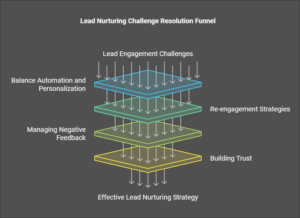
Lead nurturing is faced with its own set of challenges, but proactivity is what can make this practice even better. One of the frequent problems is striking a balance between automation and personalization; overly general messages make leads disengage, but manual efforts don’t scale well. Another challenge relates to unresponsive leads because re-engagement strategies such as exclusive deals and valuable content will help rekindle interest while managing negative responses or feedback is imperative because addressing concerns openly and promptly converts a dissatisfied lead into an ardent customer. Building trust begins with privacy concerns and regulations like GDPR. Anticipating and addressing these issues helps businesses build an effective yet flexible lead-nurturing strategy.
Best Practices of Lead Nurturing in Real Life
Study real-life examples of lead nurturing that have succeeded and learn what works. For example, a SaaS company might use personalized email campaigns to guide trial users toward a paid subscription by showing them features that fit their needs.
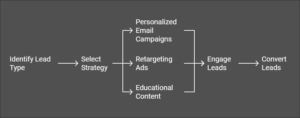
E-commerce brands often leverage retargeting ads and social proof like reviews and testimonials to convert cart abandoners. Another example would be B2B companies using educational content like whitepapers and webinars to nurture leads through a longer sales cycle. These case studies focus on understanding the audience, data-informed strategies, and maintaining consistent communication. Successful examples are a great learning platform for businesses to hone their approaches and get better outcomes.
Conclusion
Lead nurturing is a science and an art, which involves a deeper understanding of psychology, data, and strategic execution. By building relationships, offering value, and maintaining regular communication, businesses can ensure leads are moved through the sales funnel. With the right tools, channels, and best practices, lead nurturing becomes the most powerful driver of conversions and long-term success. Get started on implementing or fine-tuning your lead nurturing strategy today to unlock its full potential and achieve sustainable growth.
